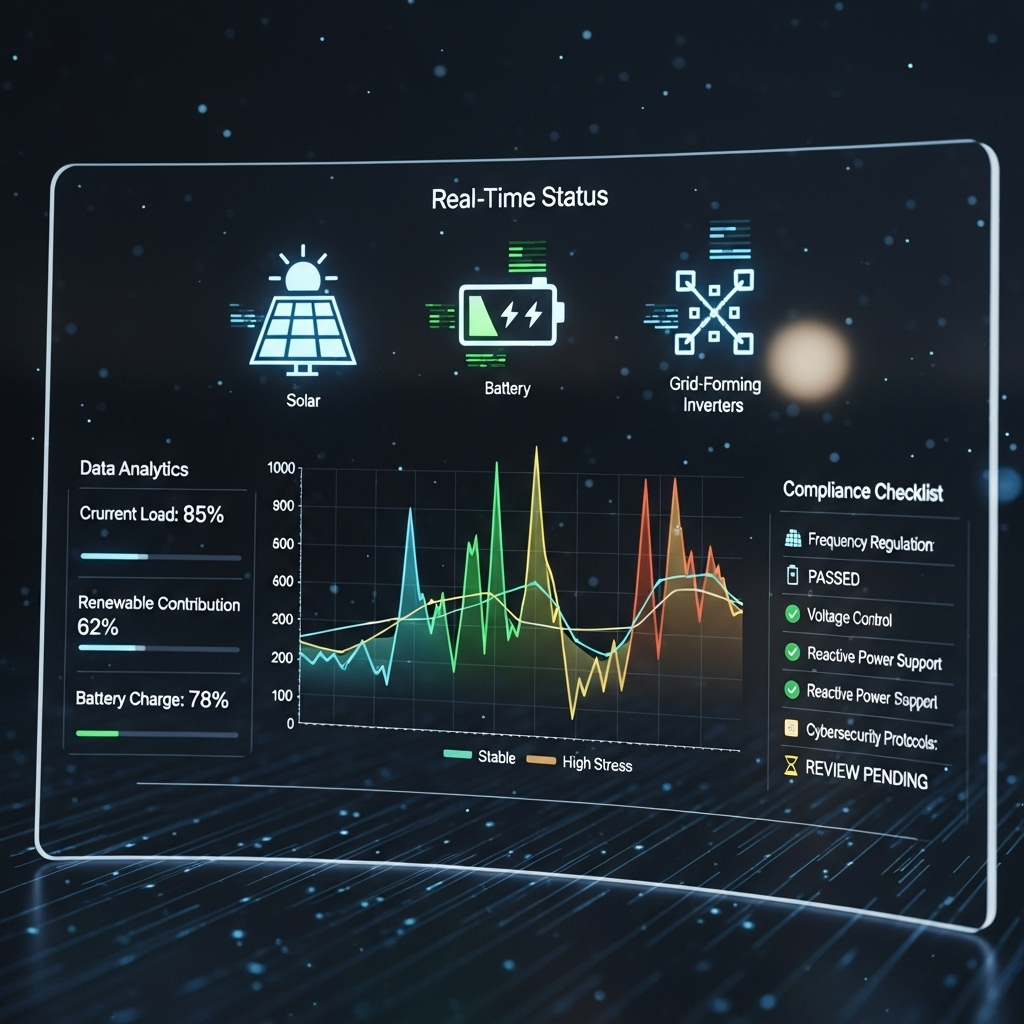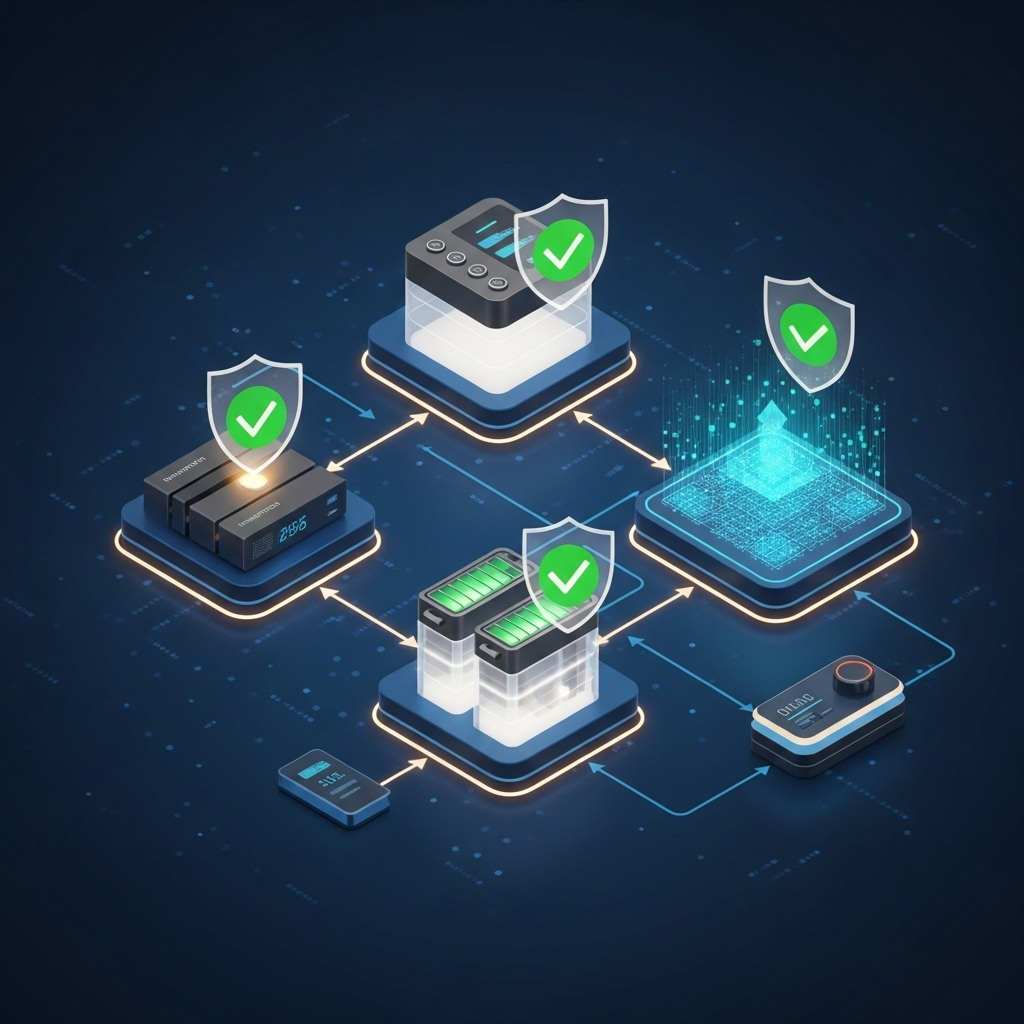Modern power grids are undergoing a significant transformation. With the rise of distributed energy resources like solar and storage, inverters have evolved from simple power converters into active grid participants. This shift demands that inverters provide sophisticated grid support functions, a capability governed by their firmware. Establishing a clear firmware compliance roadmap is no longer optional; it is fundamental to ensuring the stability, security, and performance of both individual energy systems and the broader electrical grid.
The Evolving Landscape of Grid Codes and Standards
The rules governing how renewable energy systems connect to the grid are constantly changing. Understanding these regulations is the first step in developing an effective compliance strategy. These standards dictate the technical and operational capabilities required of your equipment.
What Are Grid Codes and Why Do They Matter?
Grid codes are technical specifications that power plants must meet to gain access to the electrical grid. As detailed in the IRENA report Grid Codes for Renewable Powered Systems, their purpose is to coordinate the actions of many independent actors within the power system to achieve a common objective: reliability. These rules are regularly updated to reflect new technologies and operational needs. Standards like IEEE 1547 in North America, for example, set the requirements for interoperability and advanced inverter functions, directly impacting firmware development.
The Shift to Grid-Supportive Functions
Historically, inverters were designed to simply convert DC power to AC power and disconnect during grid disturbances. Today, they are required to actively support the grid. This includes capabilities such as voltage control through reactive power, frequency regulation, and the ability to 'ride through' voltage sags without disconnecting. According to the International Energy Agency's Technology Roadmap for Solar Photovoltaic Energy, this evolution is critical for integrating large shares of variable renewable energy while maintaining system stability. Firmware is the brain that enables these intelligent responses.
Building a Proactive Firmware Compliance Strategy
A reactive approach to firmware updates can lead to non-compliance, system downtime, and security vulnerabilities. A proactive compliance roadmap helps you stay ahead of regulatory changes and manage your assets effectively. This strategy involves careful planning, testing, and deployment.

Key Elements of a Compliance Roadmap
A structured roadmap ensures that all aspects of firmware management are addressed systematically. It transforms compliance from a recurring problem into a managed process. The plan should include a full inventory of deployed assets, continuous monitoring of regulatory changes, a robust testing protocol, and a phased deployment schedule.
| Stage | Objective | Key Activities |
|---|---|---|
| 1: Assessment | Understand current compliance status and identify gaps. | Inventory all inverters and current firmware versions. Review upcoming grid code requirements. |
| 2: Planning | Develop a strategy for sourcing, testing, and deploying updates. | Establish a firmware update schedule. Allocate resources for testing. Define communication protocols. |
| 3: Testing | Validate new firmware in a controlled environment. | Perform lab or sandbox testing to verify performance, interoperability, and security. |
| 4: Rollout | Deploy validated firmware to the field. | Implement updates in phased batches. Monitor initial performance closely. |
| 5: Monitoring | Ensure ongoing compliance and performance. | Use remote inverter monitoring to track system health and verify compliance post-update. |
The Role of Remote Inverter Monitoring
Remote monitoring is the backbone of an efficient Inverter Compliance Strategy. It provides real-time visibility into the status of every inverter in your fleet, allowing you to identify which units require updates without costly site visits. This capability is crucial for verifying that updates have been successfully installed and that the inverters are operating within the new compliance parameters. It also serves as an early warning system for potential performance issues or security threats.
Technical Deep Dive: Grid-Forming Inverters and Future Compliance
The next frontier in grid support technology is the grid-forming inverter. Unlike traditional grid-following inverters that need a stable grid signal to operate, grid-forming inverters can create their own stable grid. This functionality is unlocked entirely through advanced firmware.
Understanding Grid-Forming Capabilities
Grid-forming inverters can operate independently of the main grid, making them essential for microgrids and backup power systems. Their most impressive capability is providing a 'blackstart'—restarting a section of the grid after a complete shutdown without external power. A U.S. Department of Energy project highlighted in a Success Story on Renewable Microgrids demonstrated how 24 grid-forming inverters were used to restart a simulated grid. This technology is a game-changer for grid resilience, and compliance roadmaps must begin to account for its unique firmware requirements.
Firmware's Role in Unlocking Advanced Features
The transition from grid-following to grid-forming is purely a software and firmware challenge. The hardware is often capable, but it requires sophisticated control algorithms delivered through firmware updates to perform these advanced tasks. As utilities and regulators begin to mandate these capabilities, having an agile Inverter Firmware Update plan will be a significant operational advantage. It allows asset owners to adapt to new requirements and participate in new energy markets without needing to replace physical hardware.
Integrating Compliance into Your Operations
A roadmap is only effective when it is integrated into daily operations. This means establishing clear procedures for updates and consistently measuring the impact on system performance.
Establishing a Firmware Update Schedule
A regular Firmware Update Schedule provides predictability and minimizes operational disruption. The schedule should be based on several factors:
- Security Patches: Deployed immediately to address critical vulnerabilities.
- Compliance Updates: Rolled out according to regulatory deadlines.
- Feature Enhancements: Scheduled periodically to improve performance or add new capabilities.
Performance Metrics and Long-Term Value
Ultimately, firmware compliance is about protecting the value and performance of your solar and storage assets. Properly updated firmware ensures that your system operates efficiently, maximizes energy production, and meets all contractual and regulatory obligations. Maintaining compliant firmware directly impacts key operational indicators. You can find a detailed breakdown of how to evaluate system effectiveness in the Ultimate Reference for Solar Storage Performance, which shows how efficiency and uptime contribute to long-term returns. A well-executed compliance roadmap is a direct investment in the reliability and profitability of your energy system.
A Forward-Looking Perspective
The relationship between solar inverters and the power grid is becoming more dynamic and intelligent. As technology advances and renewable energy penetration grows, grid codes will continue to evolve. A strategic, forward-looking firmware compliance roadmap is the essential tool for navigating this complex environment. It empowers system owners to move beyond simple compliance, turning their energy assets into active, valuable participants in the grid of the future while ensuring the security and independence of their energy supply.
Frequently Asked Questions
How often should inverter firmware be updated?
There is no single answer, as the frequency depends on regulatory changes, security patch releases, and new feature availability. A good practice is to review firmware status quarterly as part of your Inverter Compliance Strategy and deploy updates as needed based on risk and operational requirements.
What are the main risks of failing to maintain firmware compliance?
The primary risks include forced disconnection from the grid by the utility, financial penalties for non-compliance, reduced system performance, and increased vulnerability to cybersecurity threats. In some cases, it can also void the manufacturer's warranty.
Can firmware updates be performed remotely?
Yes, most modern grid-supportive inverters are designed to receive secure Over-the-Air (OTA) firmware updates. Remote Inverter Monitoring platforms are used to manage and deploy these updates, which significantly reduces maintenance costs and system downtime.





Leave a comment
All comments are moderated before being published.
This site is protected by hCaptcha and the hCaptcha Privacy Policy and Terms of Service apply.